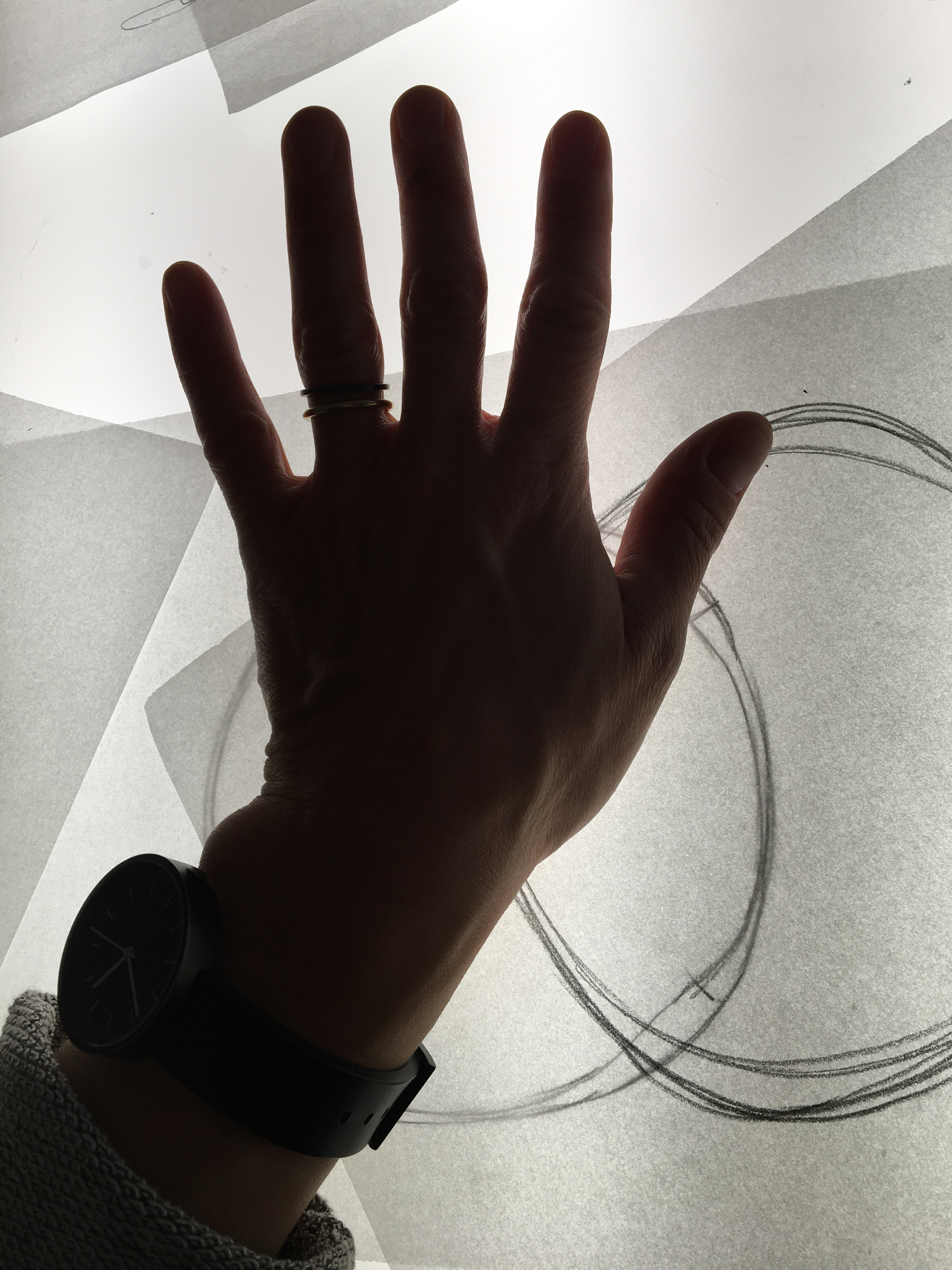Everything
starts
from
the
movement
1. Creative work

When I draw or sculpt, first there is the draft that tells me a thousand things of which I then try to extract in more detail. My sketching is very fast, as if I try to catch my thoughts and wriggle the flashes on to paper. When I feel I can stop, I start with a more detailed drawing.
I love sketching paper. I go through it a lot. Even when there’s a bad drawing, it doesn’t matter - there can be an idea behind it. Crumpling paper makes such a gentle sound. It says: Let’s make another one.
Drawing, sculpting and crafting is finding the right arch.
I find the arch by using different types of tools. When I find it, I can start carving on a physical material. I enjoy the honesty of the tangible material. Form works only once the arch is right in its spacial dimensions.
I think through my hands. I express myself with my hands. Reaction is immediate. When I carve and sculpt, the movement of my hands and the form it gives transfers instant knowledge to my eyes of how the next move needs to be done. I am a sculptor.
Model making is an extremely important stage in my working process and it can’t be skipped.
Three dimensional shape gives a lot of valuable information. Sculpting is my way of thinking and to be sure of my decisions. With touchable models it’s also easier to talk with the artesans about what is possible to do. Which shape is worth prototyping. Which form allowes to be born.
I often have several projects under progress in parallel.
I enjoy a slow process, where I can leave the work mature in my subconcious mind. Thinking requires space. Meanwhile, I can focus on other projects. Distance develops the idea and makes room for art and restores the focus on the creative process.
I leave things in stages when I feel that I am going in circles. After working with another material or scale, everything is clear, and work continues.
Then it clicks. It is a magical moment: there is a form that is not too far from the first sketch, but the essence has been captured and all the unnecessary has been removed and left behind. Now the form has quality and a soul.
2. Collaboration
Interaction with Artisans.
After chosing the model to be prototyped, I have reached the halfway point. Often, I need to prepare a mold and then the prototyping can truly begin. The objects I create are being manufactured in workshops. The interaction with different types of artisans plays a big role. I need to think how to pass on the instructions, so the craftsmen can do their part. How can I interact with their work by reacting and cooperating?
An example of my hand-eye-coordination:
In the glass cabin the glassblower is sculpting. I am watching and providing impulses to the sculptors movements. All this happens very fast. All the productions where I can work together with artisans are great. It is like carefully planned choreography, but with a chance of expression. It is wonderful to work with an artisan. One can feel involved and this allows me to be part of the object.
3. Production
In designing an object, I use the same creative process as in art. Production determines whether it is a work of art or an industrially produced series.
When I start creating an art work, my goal is not so much in the final piece, but in creating a safe area, where the craftsmen and artisans can work without forcing a theme that I have chosen. The safe area is a manuscript of where everybody has their role in it. The art piece comes alive only once it’s been created. It is my duty to be present and intuitive in the manufacturing process to perform just the right kind of directing that the situation requires.
Serial manufactoring, on other hand, needs a solid master plan to be enabled. In this case, the team work has been done already before the blueprints. To compare this to the artistic process with the safe area, there is no room for changes and experimenting on a large scale serial manufactoring. This is why producing prototypes for testing and enhancements is a very important stage of the process. I try to get as much attention and time for this stage as possible. Product developement takes a lot of recources, but without it there can not be anything new or sustainable. In this sense, the same hand-eye-impulse is present in everything I do.